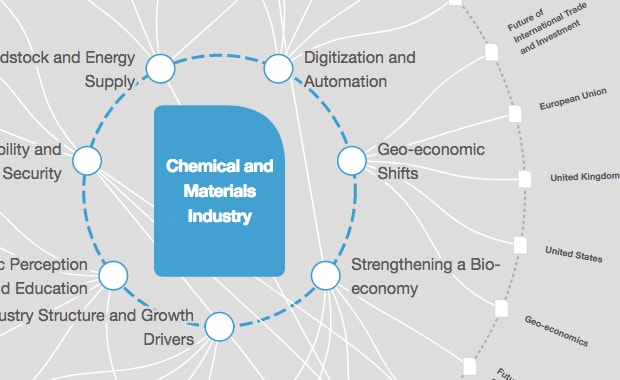This 'leaf' could turn CO2 into fuel

Chemists have engineered a molecule that uses light or electricity to convert carbon dioxide into carbon monoxide. Image: REUTERS/Tim Wimborne
Chemists have engineered a molecule that uses light or electricity to convert carbon dioxide into carbon monoxide—a carbon-neutral fuel source—more efficiently than any other method of “carbon reduction.”
“If you can create an efficient enough molecule for this reaction, it will produce energy that is free and storable in the form of fuels,” says study leader Liang-shi Li, associate professor in the chemistry department at Indiana University Bloomington. “This study is a major leap in that direction.”
Burning fuel—such as carbon monoxide—produces carbon dioxide and releases energy. Turning carbon dioxide back into fuel requires at least the same amount of energy. A major goal among scientists has been decreasing the excess energy needed.
This is exactly what Li’s molecule achieves: requiring the least amount of energy reported thus far to drive the formation of carbon monoxide. The molecule—a nanographene-rhenium complex connected via an organic compound known as bipyridine—triggers a highly efficient reaction that converts carbon dioxide to carbon monoxide.

The new molecule employs a nanographene complex (on left) to absorb light and drive the conversion of carbon dioxide (upper center) to carbon monoxide (on right).
The ability to efficiently and exclusively create carbon monoxide is significant due to the molecule’s versatility.
“Carbon monoxide is an important raw material in a lot of industrial processes,” Li says. “It’s also a way to store energy as a carbon-neutral fuel since you’re not putting any more carbon back into the atmosphere than you already removed. You’re simply re-releasing the solar power you used to make it.”
The secret to the molecule’s efficiency is nanographene—a nanometer-scale piece of graphite, a common form of carbon (i.e. the black “lead” in pencils)—because the material’s dark color absorbs a large amount of sunlight.
Li says that bipyridine-metal complexes have long been studied to reduce carbon dioxide to carbon monoxide with sunlight. But these molecules can use only a tiny sliver of the light in sunlight, primarily in the ultraviolet range, which is invisible to the naked eye. In contrast, the molecule takes advantage of the light-absorbing power of nanographene to create a reaction that uses sunlight in the wavelength up to 600 nanometers—a large portion of the visible light spectrum.
Essentially, Li says, the molecule acts as a two-part system: a nanographene “energy collector” that absorbs energy from sunlight and an atomic rhenium “engine” that produces carbon monoxide. The energy collector drives a flow of electrons to the rhenium atom, which repeatedly binds and converts the normally stable carbon dioxide to carbon monoxide.
The idea to link nanographene to the metal arose from Li’s earlier efforts to create a more efficient solar cell with the carbon-based material. “We asked ourselves: Could we cut out the middle man—solar cells—and use the light-absorbing quality of nanographene alone to drive the reaction?” he says.
Next, Li plans to make the molecule more powerful, including making it last longer and survive in a non-liquid form, since solid catalysts are easier to use in the real world. He is also working to replace the rhenium atom in the molecule—a rare element—with manganese, a more common and less expensive metal.
The Indiana University Office of the Vice Provost for Research and the National Science Foundation supported the research, which appears in the Journal of the American Chemical Society.
Don't miss any update on this topic
Create a free account and access your personalized content collection with our latest publications and analyses.
License and Republishing
World Economic Forum articles may be republished in accordance with the Creative Commons Attribution-NonCommercial-NoDerivatives 4.0 International Public License, and in accordance with our Terms of Use.
The views expressed in this article are those of the author alone and not the World Economic Forum.
Stay up to date:
Future of the Environment
Related topics:
Forum Stories newsletter
Bringing you weekly curated insights and analysis on the global issues that matter.
More on Climate Action and Waste Reduction See all
Planet in focus: The technologies helping restore balance – and other news to watch in frontier tech
Jeremy Jurgens
November 13, 2025






